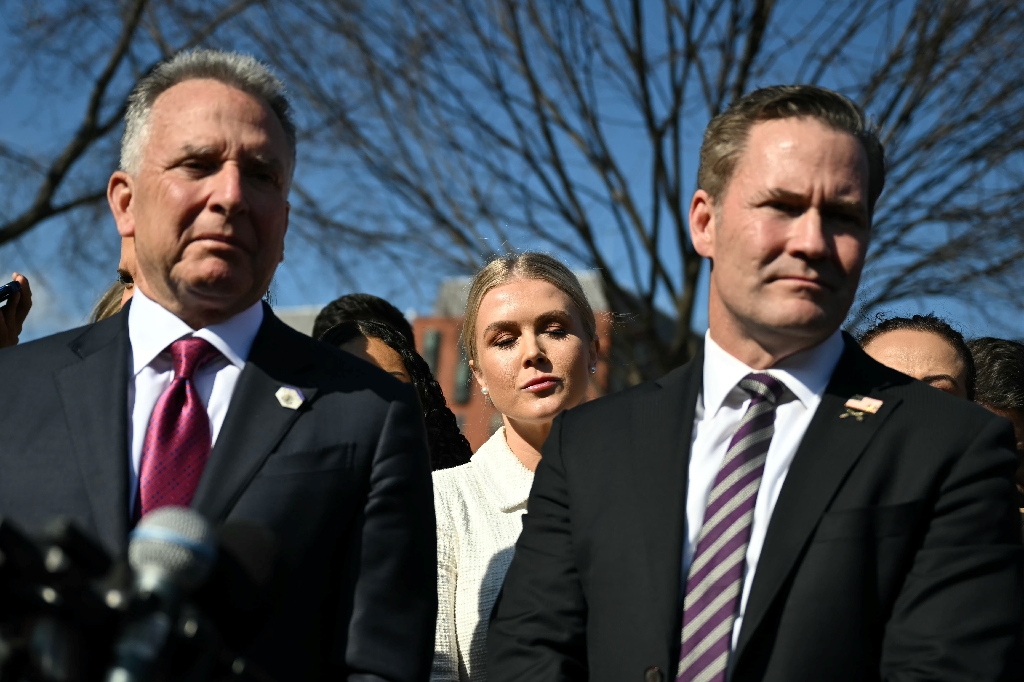Washington (AFP) – US inflation is “still too high” despite a recent slowdown, Federal Reserve Chair Jerome Powell said Thursday, leaving the door open for a new interest rate hike.
Additional evidence of “persistently above-trend growth” or fresh signs of tightness in the labor market “could warrant further tightening of monetary policy,” he told a conference in New York.
The Fed recently slowed its aggressive campaign of monetary tightening which lifted its benchmark lending rate to a 22-year high, as it looks to slow down inflation without pushing the US economy into recession.
Headline inflation, as measured by the Fed’s favored gauge, has more than halved since peaking in June last year, but remains stuck above its long-term target of two percent.
“Inflation is still too high, and a few months of good data are only the beginning of what it will take to build confidence that inflation is moving down sustainably toward our goal,” Powell said in a speech that was briefly delayed by climate change protesters.
“We cannot yet know how long these lower readings will persist, or where inflation will settle over coming quarters,” he continued, adding that the Fed would proceed “carefully” at future interest rate meetings.
“The Fed is in no hurry to tighten monetary policy further.A November rate hike can safely be priced out,” EY Chief Economist Gregory Daco wrote in a note to clients.
US stocks declined following Powell’s remarks, ending the day firmly in the red.
– Monetary policy is ‘restrictive’ –
Powell said the Fed’s current policy stance is “restrictive,” suggesting that monetary policy was working to put “downward pressure on economic activity and inflation.”
The US economy “is handling much higher rates — at least for now — without difficulty,” he said.
“Does it feel like policy is too tight right now?I would have to say no,” he added.
Recent data points to the continued strength of the US economy supported by resilient consumer spending, while the tight labor market is showing some signs of softening.
Powell warned that “a range of uncertainties, both old and new,” were complicating monetary policy.
The Fed’s upcoming decisions will be “based on the totality of the incoming data, the evolving outlook, and the balance of risks,” he said, echoing previous comments.
“Our view remains that the Fed is done with its tightening cycle, but that rate cuts won’t occur until June 2024,” said Daco from EY.
Futures traders now assign a probability of 99 percent that the Fed will hold interest rates steady on November 1, following its next meeting, according to data from CME Group.
– Geopolitical tensions threaten economy-
In an unusual move, Powell also addressed the ongoing conflict between Israel and Hamas militants in Gaza.
“Geopolitical tensions are highly elevated and pose important risks to global economic activity,” he said.
“Speaking for myself, I found the attack on Israel horrifying, as is the prospect for more loss of innocent lives,” he continued.
The Fed’s role is to monitor what economic implications these developments could have, he added.
Analysts have voiced concerns that the Israel-Hamas war could spread into a broader regional conflict in the crude-rich Middle East, with implications for oil production.
– Philadelphia dove –
Speaking later Thursday, the president of the Philadelphia Fed voiced a slightly softer, more “dovish” perspective on interest rate policy.
“I believe that we are at the point where we can hold rates where they are,” Patrick Harker told a conference in Philadelphia.
“I think doing nothing at this moment equates to doing quite a lot,” he said.
“As long as policy rates remain restrictive, we will keep steadily pressing down on inflation and bringing markets into better balance,” he added.




